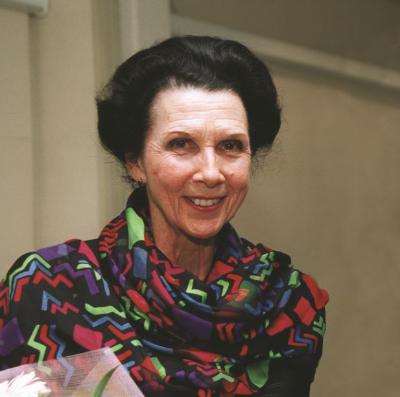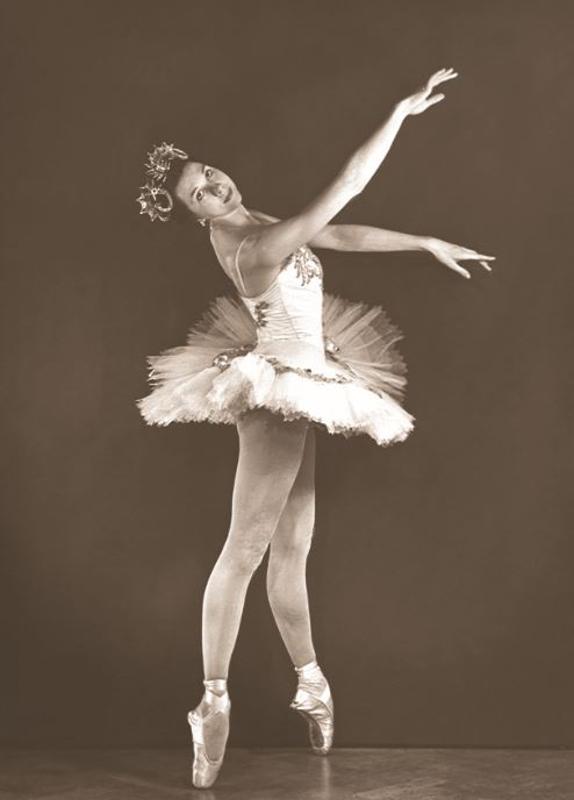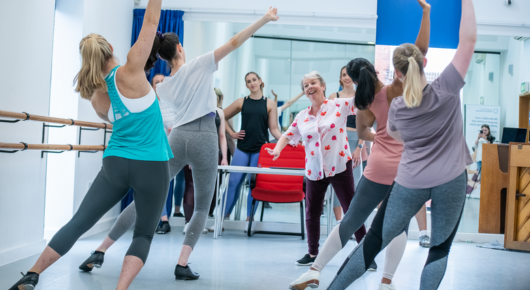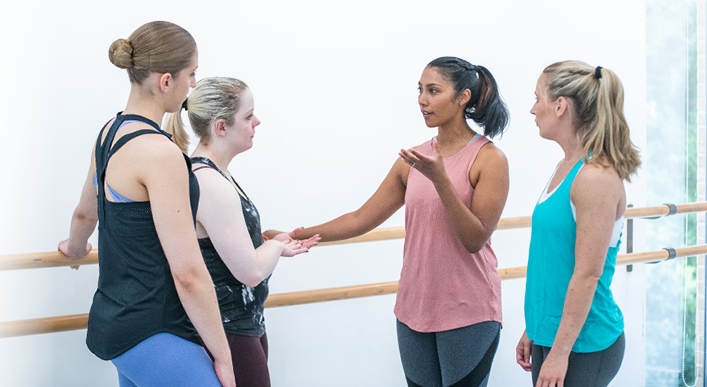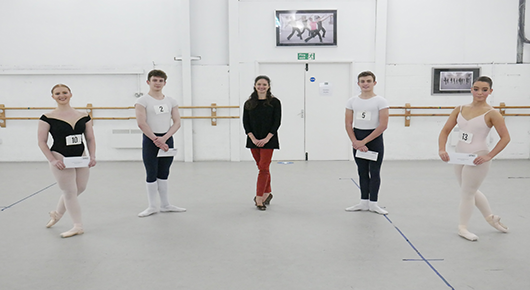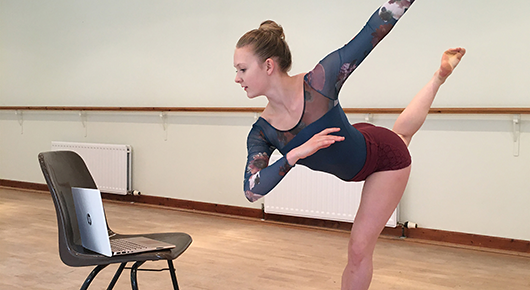12 December 2022
1927 - 2022
Born 11 June 1927 in Highgate, Dame Beryl Grey DBE DMus DLitt DEd FRSA began dance classes whilst attending Sherbourne Preparatory School. At the age of eight, she was taught ballet by renowned dance teacher Phyllis Bedells. Her talent was recognised by Ursula Moreton and Ninette de Valois, who offered her a scholarship for four years, with the option of joining their company for a further four. In 1941, Beryl Grey was taken into the company.
Dame Beryl danced Swan Lake as Odette/Odile on her 15th birthday, Giselle at 16, and The Sleeping Beauty aged 19. She danced many classical and modern roles, including Les Sylphides, Checkmate, The Three-Cornered Hat, and Les Rendezvous. From 1957 to the mid-60s, Beryl Grey was an international guest Ballerina across Europe, South America, Australasia, the Far East, USA, and Canada.
She was the first western guest artist to dance with the Bolshoi Ballet (1957-58), and to appear with the Peking Ballet and Shanghai Company with a Chinese partner (1964).
After two years as the Director of the Arts Educational Schools and Teacher Training College, Beryl Grey became the Artistic Director of the London Festival Ballet (currently the English National Ballet) from 1968 until 1979. It was during this time that the links with the Imperial Society of Teachers of Dancing were forged, firstly as a Council member. She also stood as a Governor with the London College of Dance from 1966, becoming Vice-Chairman in 1984 until 1993.
Dame Beryl Grey has served on various boards and was past Vice-President of the Royal Academy of Dance, The Music Therapy Charity, British Federation of Music Festivals; President of the Dance Council of Wales; Vice-Chairman of the Governors of the Royal Ballet and Dance Teachers Benevolent Fund, and Chairman of the Royal Ballet Benevolent Fund. She was also a Director of the Royal Opera House.
A wise and dynamic Chairman of the ISTD from 1984 - 1991, and President from 1991 - 2000, she received the Imperial Award in 1987 and was made honorary Life President.
Dame Beryl was one of the most celebrated British ballerinas of her generation, and her dedication to training dancers will be recognised for generations to come.
You can read more about her life in the 2018 article written by Anna Meadmore of the National Youth Ballet below.
A rare combination of qualities
This year’s graduation ceremony [2018] was also the occasion of a special celebration of the life and work of our Life President, Dame Beryl Grey CH DBE.
Dame Beryl Grey CH DBE DMus DLitt DEd FRSA, who celebrated her 90th birthday last year [2017], remains a vital presence in the world of ballet. Behind the scenes, away from the glamour and excitement of the stage, she has long served on countless boards and committees, making an extraordinary contribution to the continuing development and good governance of British dance.
Dame Beryl’s association with the Imperial Society of Teachers of Dancing has been of special significance: she joined the Council of the ISTD in 1962, becoming its Chair from 1984–1991, then President until 2000. She also served as a Governor of the London College of Dance from 1966, helping to oversee its incorporation into the ISTD, and acting as the College’s Vice-Chair from 1984–1993. She received the prestigious Imperial Award in 1987 and is the honorary Life President of the ISTD’s Grand Council.
More widely, Beryl Grey has long been recognised as a supreme ambassador for music, dance and education in the arts; she was made a Dame in 1988 and holds five honorary doctoral degrees. In 1997 she was presented with the Queen Elizabeth II Coronation Award of the Royal Academy of Dance; and in February 2017, she received the De Valois Award for Outstanding Achievement at the Critics’ Circle National Dance Awards.
Dame Beryl is the President of both the English National Ballet and the British Ballet Organisation. She is a Vice-President of the Royal Academy of Dance, The Music Therapy Charity and the British and International Federation of Festivals. She is also the Chair of the Dance Professionals Fund (formerly the Royal Ballet Benevolent Fund), and a Patron of the Critics’ Circle National Dance Awards.
Her exceptional services to dance were duly acknowledged in June 2017, when Dame Beryl was appointed to the Order of Companions of Honour in The Queen’s Birthday List.
Beryl Grey began life as Beryl Groom, her earliest recollection of dancing in public being when she was just four years old. Young Beryl displayed unusual dedication, working on her dancing before and after school from a very early age. At the age of 10, she was accepted to the Vic-Wells School on a full scholarship, where a despairing teacher soon declared to the director, Ninette de Valois, that she could not see how to instruct the child, who could already “do everything!’”
De Valois was a formidable figure, known to her dancers as ‘Madam’. Not given to dispensing praise lightly, she wrote in eleven-year-old Beryl’s school report for the Michaelmas Term of 1938: “This student has all the gifts that it is possible to bestow on a young dancer. Her behaviour is above any reproach and she is remarkably unspoilt…. She should have a remarkable future.”
De Valois’ carefully laid plans to protect her young prodigy from the pressures of performing too soon were disrupted by the outbreak of World War Two. As a result, Beryl Grey was just 14 when she joined the Sadler’s Wells (later The Royal) Ballet in 1941. She famously danced her first Odette/Odile in Swan Lake on her 15th birthday, 11th June 1942, supported by Robert Helpmann. As he had done for Fonteyn, Helpmann coached Grey in partnering and characterisation for all her early principal roles, particularly for her debuts as Giselle in 1944, and Aurora two years later. In the Company’s signature post-war 1946 production of The Sleeping Beauty, Beryl Grey was to become The Royal Ballet’s definitive Lilac Fairy. She appeared in the role on the occasion of the grand re-opening of the Royal Opera House after the war, and on the Company’s legendary first night at the Metropolitan Opera House in New York in 1949.
Throughout a stellar career, Beryl Grey was acclaimed for her remarkable technique, quick intelligence, and the gracious warmth of her dancing. Her expansive personality reached over the footlights, and many people in the audience became her lifelong personal friends. With her unusually tall stature and extreme youth, Grey broke the mould of the English ballerina. She always remained intensely loyal to de Valois and her Company, where she began her career, but she also felt the need to assert her independence of mind and spirit, and to dance elsewhere. Her marriage in July 1950 to the renowned Swedish osteopath, Dr Sven Svenson, further widened her horizons, as did the arrival of their son, Ingvar, in 1954; the couple’s happy partnership was to last for almost 60 years until Sven’s death at the age of 100.
In 1952 Grey secured de Valois’ permission to star in the first ‘stereoscopic’ ballet film The Black Swan (dir. Leonard Reeve). She also appeared as a Principal Guest Artist of the Royal Opera House, Stockholm in 1953 and 1955, finally leaving The Royal Ballet in 1957 to become the first English dancer to perform with the great Russian companies of St Petersburg (then called Leningrad) and Moscow (1957–58). By now a celebrated guest artist around the world, Grey wrote unique accounts of performing and teaching in Russia and China: Red Curtain Up (Secker and Warburg, 1958) and Through the Bamboo Curtain (Collins, 1965).
She was twice given the BBC’s much-coveted accolade of being cast away on a desert island, first in 1958, and again in 2002. On the second occasion, she explained the source, not only of her passion for dance, but also her independence of thought: “Movement has to be something you feel, not something you are told to do – it has to come from within, you have to be convinced yourself of every movement you do – every movement must have a meaning.”
Beryl Grey’s first engagement with London Festival Ballet (now English National Ballet or ENB) was as a guest artist during the Company’s seasons of 1957 and 1958. In 1966 she took on the role of Director General of the affiliated Arts Educational School, and became a Governor of the London Festival Ballet, becoming its Artistic Director from 1968 to 1979. She completely reinvigorated the Company, raising its standards of performance and production – most notably inviting Mary Skeaping to mount her authoritative version of Giselle in 1971, and Rudolf Nureyev to create his opulent Romeo and Juliet in 1977; both ballets remain pillars of the ENB repertoire.
Dame Beryl’s much-anticipated autobiography, aptly entitled For the Love of Dance, was published last year (Oberon Books, 2017). While we can now enjoy her personal account of a truly remarkable career, perhaps those who saw her dance can best convey her special attributes on stage. Writing in 1955, Arnold Haskell observed Beryl Grey’s ‘rare combination of qualities’ as a dancer: ‘Her fine musicality has enabled her to use her extra height to extraordinary advantage; she phrases magnificently. Her technique is sure and completely unobtrusive. She has a warm and generous personality and far more temperament than the average English dancer.’
Ballet is a subtle, elusive art, and it is surely fitting to turn to a poet in conclusion; in 1952 the Poet Laureate, John Masefield, wrote a six-verse poem entitled ‘Miss Beryl Grey as The Prelude in Les Sylphides’. Here is the lovely third verse, in which Dame Beryl can still dance in our imaginations:
What is she thinking of, this floating flower?
Is she but keeping every nerve intent On movement strained to graces, and the air?
Is she withinly happy in her power, A thousand watchers making her aware
That they are hers, to govern by a hair, Hers to a heart, as to an angel sent? Or is all faculty too tensely bent
On this, the living instant in the hour?
Article by Anna Meadmore as featured in Issue #483 of Dance magazine. You can watch an interview with the late Dame Beryl below.
